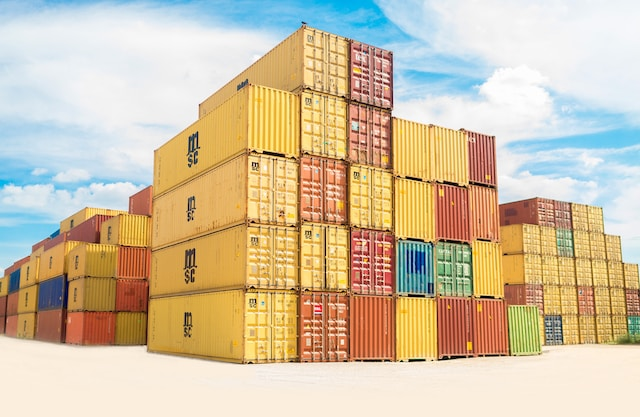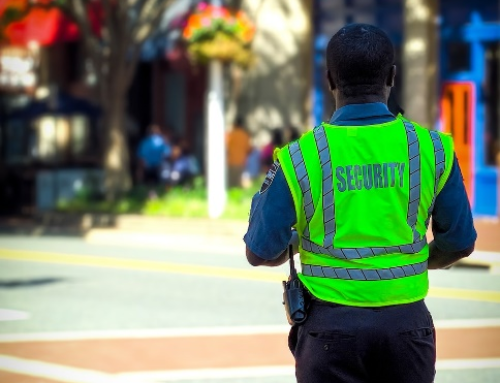The Port of Baltimore plays a pivotal role in the economic growth of the region. It handles millions of tons of cargo each year, making it a crucial point of entry and exit for goods moving through the United States. However, with this high volume of traffic, ensuring the secure transit of cargo is crucial.
In this blog, we’ll explore some key strategies to safely transport equipment through the Port of Baltimore.
Strengthening Physical Security Measures
Ensuring the physical security of equipment as they pass through the Port of Baltimore is the first line of defense against theft and unauthorized access. Here are some essential steps to boost physical security:
Surveillance Systems
Investing in state-of-the-art surveillance systems is crucial. High-definition cameras should cover all critical areas, including entry and exit points, storage yards, and loading docks.

Access Control
Implementing robust perimeter fencing with access control measures is essential. It prevents unauthorized individuals from entering restricted areas. Use access control systems like access cards or biometric systems to ensure only authorized personnel can access sensitive zones.
Well-Lit Facilities
Proper lighting is a simple yet effective security measure. Well-lit areas deter criminals and provide better visibility for security guards.
Security Training
Security officers should undergo extensive training in threat assessment and emergency response procedures. Their presence should stop criminals, and their skills should be ready to handle any security incident efficiently.
Secure Storage Facilities
Designate secure storage areas for equipment and cargo. Implement access controls and alarm systems in these facilities to protect valuable assets from theft.
Regulatory Compliance
Ensuring secure equipment transit through the Port of Baltimore also involves compliance with relevant regulations. Here are some key steps to follow:
Import And Export Regulations
Stay updated on import and export regulations, including customs requirements and security protocols. Failure to comply with these regulations can lead to delays or fines.
Documentation Accuracy
Maintain accurate and complete documentation, including certificates of origin and customs declarations for all equipment.
Compliance Audits
Conduct regular compliance audits to ensure all procedures and documentation meet the required standards. Audits can identify areas where improvements are needed to enhance cargo transportation.
Collaboration with Authorities
Work closely with customs authorities and regulatory agencies to ensure smooth transit. Establish open communication channels to resolve any issues promptly.
Emergency Response
Despite all precautions, emergencies can still occur during equipment transit. Being prepared for such situations is crucial. Here are steps to create an effective emergency response:
- Risk assessment: Conduct a comprehensive risk assessment to identify potential threats in the equipment transit process. Your assessment should cover natural disasters, accidents, and security incidents.
- Emergency contacts: Maintain a list of emergency contacts, including local law enforcement, fire departments, and relevant government agencies. Ensure these contacts are readily accessible to your workers.
- Recovery plans: Develop detailed recovery plans for different types of emergencies. These plans should outline the steps to be taken to minimize damage and resume operations as quickly as possible.
- Communication protocols: Establish clear communication protocols for notifying relevant stakeholders during an emergency. It includes notifying equipment owners, cargo owners, and regulatory authorities.
Hire TWIC Escorts To Safely Transport Equipment
In the intricate web of logistics and security measures at the Ports of Baltimore, one crucial element often overlooked is the role of Transportation Worker Identification Credential (TWIC) escorts. These individuals play a crucial role in enhancing the security of equipment transit, ensuring a smooth passage through the port.
A TWIC is a biometric identification card issued by the Transportation Security Administration (TSA) to workers requiring unescorted access to secure areas within the port. By enlisting TWIC escorts, you add an extra layer of security to the equipment transit process. Their presence can help you transport your precious equipment without any hassle.
The Ports of Baltimore have strict regulatory frameworks designed to safeguard equipment safety. Compliance with these regulations is crucial for the uninterrupted flow of cargo. TWIC escorts know about these regulations and can help ensure all equipment transit activities adhere to the requirements.
Navigating the sprawling port environment can be a daunting task, especially for those unfamiliar with its intricacies. TWIC escorts are well-acquainted with the port’s layout, security checkpoints, and access protocols. Their expertise in guiding equipment safely through the port not only minimizes the risk of unauthorized access but also ensures that cargo reaches its destination on time.
In a fast-paced environment like the Port of Baltimore, time is money. TWIC escorts streamline the transit process, helping equipment move efficiently through the port’s various stages.

Get Exceptional TWIC Escort Services
Need top-notch TWIC escort services? You’ve come to the right place! At Operational Police Protective Services, our TWIC escorts can help you efficiently transport your equipment and streamline your cargo transit process.
So, what are you waiting for? Contact our team for more details about our TWIC escort services.







Leave A Comment
You must be logged in to post a comment.